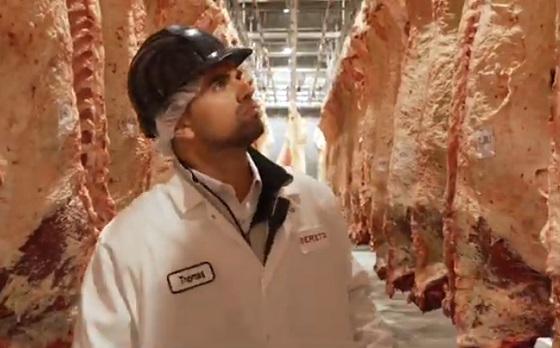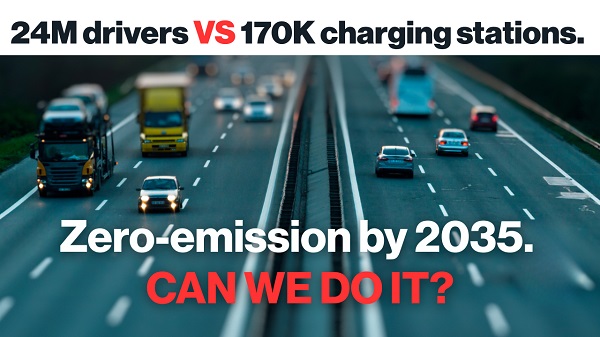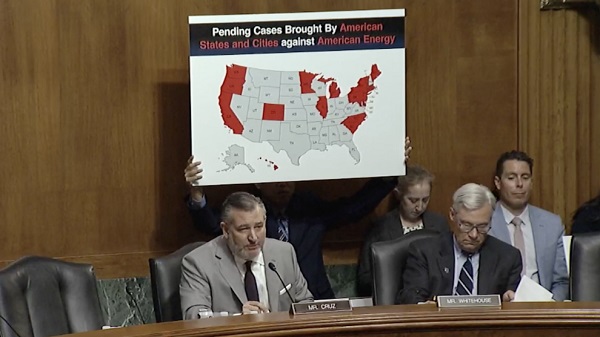Agriculture
Extreme Weather Patterns Causing State of Agricultural Emergency in Canada

We welcome guest writers to all of our Todayville platforms. Here’s a submission from Emily Folk. Emily is passionate about agricultural sustainability and more of her work can be found on her site, Conservation Folks.
Extreme Weather Patterns Causing State of Agricultural Emergency in Canada
Climate change is spurring intense droughts and floods around the world, leading to crop failures. While corporations and consumers look for ways to reverse the impact of global warming, farmers are dealing with the consequences now.
Canada has high hopes for impending weather shifts. As temperatures rise, the country could gain access to more fertile land. Yet, it’s also dealing with new challenges, including droughts and constant rain.
A Lack of Moisture
Twelve counties in Manitoba declared a state of agricultural emergency due to a severe drought, leaving farmers unable to produce enough feed for cattle. While some are paying to transport hay, others are opting to sell.
Dianne Riding, VP of the Manitoba Beef Producers, says her farm produces around 1,800 bales of hay in a typical season. Last year, they had 500 — this season, only 250. With her reserves depleted, she says she won’t have enough to feed her 130 cows.
Some farmers are transitioning to regenerative agricultural practices in an attempt to prevent livestock from decimating plant life. Other countries, such as China, have already used this method to restore 3.7 million acres of land and increase grain production by 60%.
Canada’s ability to navigate climate change will hinge on its management of water resources. Its prairies, which make up 80% of farmland, were hit by the infamous Dust Bowl in the 1930s. According to researchers, it’s a problem that could repeat itself as temperatures rise.
Federal organizations are establishing green initiatives to simplify environmental shifts. Many corporations are also transitioning to eco-friendly practices, both due to environmental concern and buyer demand. Globally, 66% of consumers are willing to pay more for products from a sustainable company.
A Downpour of Rain
In other parts of the country, excess moisture is an issue. Lac Ste. Anne County in north-central Alberta has declared a state of agricultural emergency due to persistent showers and early snowfall. Between mid-June and the end of July, the county received 406 millimeters of rain.
One significant issue is livestock feed. With wet fields, farmers have difficulty accessing their crops. When they do, the hay often isn’t dry enough to safely and correctly bail it.
Stacey Berry, the county’s assistant manager of agricultural services, reports some fields are seeing upwards of 80% crop death. The goal of the state of emergency is to make it easier for farmers to file insurance claims for losses.
Nearby Leduc County, 30 kilometers south of Edmonton, also declared a local state of agricultural disaster. Similar to in Lac Ste. Anne, the poor weather affected the quality and quantity of yields.
An Eventual Warming
The federal government recently released a warning that droughts, floods and violent storms will increase in frequency. As a result of climate change, experts predict most regions of Canada will warm during the next 60 years. As the country is high-latitude, warming will be more pronounced than the global average.
As the droughts increase, crop yields will decline. Warmer summers could boost the number of heat-wave-related deaths, especially in poultry operations. Plus, diminished weight gain in cattle could lead to reduced milk and dairy production.
In addition to extreme weather events and decreased yield, climate change will also affect disease and pests. Higher levels of Carbon Dioxide (CO2) will lead to greater weed growth and the prevalence of pests and pathogens. The range, frequency and severity of insect and disease infections may rise drastically.
An Opportunity to Expand
In Canada, rising temperatures could be a beneficial opportunity for farmers, opening up millions of once frozen acres. The amount of arable land in Alberta, Manitoba and Saskatchewan alone could increase up to 40% by 2040.
Most regions will likely become warmer, with longer pest-free seasons and increased evaporation. The higher temperatures require less feed for livestock, benefiting production and survival rates. It could also benefit soil health by enhancing carbon sequestration and reducing the emission of greenhouse gases.
Farmers hope to capitalize on the warmer conditions by exporting food to regions hit by crop failure. The world agricultural production will need to increase by 50% by 2050 to keep up with population growth.
_______________________________________________________________

I’m Emily Folk, and I grew up in a small town in Pennsylvania. Growing up I had a love of animals, and after countless marathons of watching Animal Planet documentaries, I developed a passion for ecology and conservation.
Read more stories on Todayville Agriculture.
Agriculture
Lacombe meat processor scores $1.2 million dollar provincial tax credit to help expansion

Alberta’s government continues to attract investment and grow the provincial economy.
The province’s inviting and tax-friendly business environment, and abundant agricultural resources, make it one of North America’s best places to do business. In addition, the Agri-Processing Investment Tax Credit helps attract investment that will further diversify Alberta’s agriculture industry.
Beretta Farms is the most recent company to qualify for the tax credit by expanding its existing facility with the potential to significantly increase production capacity. It invested more than $10.9 million in the project that is expected to increase the plant’s processing capacity from 29,583 to 44,688 head of cattle per year. Eleven new employees were hired after the expansion and the company plans to hire ten more. Through the Agri-Processing Investment Tax Credit, Alberta’s government has issued Beretta Farms a tax credit of $1,228,735.
“The Agri-Processing Investment Tax Credit is building on Alberta’s existing competitive advantages for agri-food companies and the primary producers that supply them. This facility expansion will allow Beretta Farms to increase production capacity, which means more Alberta beef across the country, and around the world.”
“This expansion by Beretta Farms is great news for Lacombe and central Alberta. It not only supports local job creation and economic growth but also strengthens Alberta’s global reputation for producing high-quality meat products. I’m proud to see our government supporting agricultural innovation and investment right here in our community.”
The tax credit provides a 12 per cent non-refundable, non-transferable tax credit when businesses invest $10 million or more in a project to build or expand a value-added agri-processing facility in Alberta. The program is open to any food manufacturers and bio processors that add value to commodities like grains or meat or turn agricultural byproducts into new consumer or industrial goods.
Beretta Farms’ facility in Lacombe is a federally registered, European Union-approved harvesting and meat processing facility specializing in the slaughter, processing, packaging and distribution of Canadian and United States cattle and bison meat products to 87 countries worldwide.
“Our recent plant expansion project at our facility in Lacombe has allowed us to increase our processing capacities and add more job opportunities in the central Alberta area. With the support and recognition from the Government of Alberta’s tax credit program, we feel we are in a better position to continue our success and have the confidence to grow our meat brands into the future.”
Alberta’s agri-processing sector is the second-largest manufacturing industry in the province and meat processing plays an important role in the sector, generating millions in annual economic impact and creating thousands of jobs. Alberta continues to be an attractive place for agricultural investment due to its agricultural resources, one of the lowest tax rates in North America, a business-friendly environment and a robust transportation network to connect with international markets.
Quick facts
- Since 2023, there are 16 applicants to the Agri-Processing Investment Tax Credit for projects worth about $1.6 billion total in new investment in Alberta’s agri-processing sector.
- To date, 13 projects have received conditional approval under the program.
- Each applicant must submit progress reports, then apply for a tax credit certificate when the project is complete.
- Beretta Farms has expanded the Lacombe facility by 10,000 square feet to include new warehousing, cooler space and an office building.
- This project has the potential to increase production capacity by 50 per cent, thereby facilitating entry into more European markets.
Related information
Agriculture
Canada’s supply management system is failing consumers

This article supplied by Troy Media.
The supply management system is cracking. With imports climbing, strict quotas in place and Bill C202 on the table, we’re struggling to feed ourselves
Canada’s supply management system, once seen as a pillar of food security and agricultural self-sufficiency, is failing at its most basic function:
ensuring a reliable domestic supply.
According to the Canadian Association of Regulated Importers, Canada imported more than 66.9 million kilograms of chicken as of June 14, a 54.6 per cent increase from the same period last year. That’s enough to feed 3.4 million Canadians for a full year based on average poultry consumption—roughly 446 million meals. Under a tightly managed quota system, those meals were supposed to be produced domestically. Instead imports now account for more than 12 per cent of this year’s domestic chicken production, revealing a growing dependence on foreign supply.
Supply management is Canada’s system for regulating dairy, poultry and egg production. It uses quotas and fixed prices to match domestic supply with demand while limiting imports, intended to protect farmers from global price swings and ensure stable supply.
To be fair, the avian influenza outbreak has disrupted poultry production and partially explains the shortfall. But even with that disruption, the numbers are staggering. Imports under trade quotas set by the World Trade Organization, the Canada-United States Mexico Agreement and the Comprehensive and Progressive Agreement for Trans-Pacific Partnership are running at or near their allowable monthly share—known as pro-rata
levels—signalling not just opportunity, but urgency. Supplementary import permits, meant to be used only in emergencies, have already surpassed 48 million kilograms, exceeding total annual import volumes in some previous years. This isn’t a seasonal hiccup. It’s a systemic failure.
The system, designed to buffer domestic markets from global volatility, is cracking under internal strain. When emergency imports become routine, we have to ask: what exactly is being managed?
Canada’s most recent regulated chicken production cycle, which ended May 31, saw one of the worst shortfalls in over 50 years. Strict quota limits stopped farmers from producing more to meet demand, leaving consumers with higher grocery bills and more imported food, shaking public confidence in the system.
Some defenders insist this is an isolated event. It’s not. For the second straight week, Canada has hit pro-rata import levels across all chicken categories. Bone-in and processed poultry, once minor players in emergency import programs, are now essential just to keep shelves stocked.
And the dysfunction doesn’t stop at chicken. Egg imports under the shortage allocation program have already topped 14 million dozen, a 104 per cent jump from last year. Not long ago, Canadians were mocking high U.S. egg prices. Now theirs have fallen. Ours haven’t.
All this in a country with $30 billion in quota value, supposedly designed to protect domestic production and reduce reliance on imports. Instead, we’re importing more and paying more.
Rather than addressing these failures, Ottawa is looking to entrench them. Bill C202, now before the Senate, seeks to shield supply management from future trade talks, making reform even harder. So we must ask: is this really what we’re protecting?
Meanwhile, our trading partners are taking full advantage. Chile, for instance, has increased chicken exports to Canada by more than 63 per cent, now accounting for nearly 96 per cent of CPTPP-origin imports. While Canada doubles down on protectionism, others are gaining long-term footholds in our market.
It’s time to face the facts. Supply management no longer guarantees supply. When a system meant to ensure resilience becomes a source of fragility, it’s no longer an asset—it’s an economic liability.
Dr. Sylvain Charlebois is a Canadian professor and researcher in food distribution and policy. He is senior director of the Agri-Food Analytics Lab at Dalhousie University and co-host of The Food Professor Podcast. He is frequently cited in the media for his insights on food prices, agricultural trends, and the global food supply chain.
Troy Media empowers Canadian community news outlets by providing independent, insightful analysis and commentary. Our mission is to support local media in helping Canadians stay informed and engaged by delivering reliable content that strengthens community connections and deepens understanding across the country.
-

 Bruce Dowbiggin2 days ago
Bruce Dowbiggin2 days agoCanada Day 2025: It’s Time For Boomers To Let The Kids Lead
-

 Agriculture2 days ago
Agriculture2 days agoCanada’s supply management system is failing consumers
-

 Alberta24 hours ago
Alberta24 hours agoCOVID mandates protester in Canada released on bail after over 2 years in jail
-

 armed forces20 hours ago
armed forces20 hours agoCanada’s Military Can’t Be Fixed With Cash Alone
-

 Business2 days ago
Business2 days agoPrairie provinces and Newfoundland and Labrador see largest increases in size of government
-

 International23 hours ago
International23 hours agoTrump transportation secretary tells governors to remove ‘rainbow crosswalks’
-

 Business23 hours ago
Business23 hours agoCarney’s spending makes Trudeau look like a cheapskate
-

 Alberta2 days ago
Alberta2 days agoAlberta government records $8.3 billion surplus—but the good times may soon end








You must be logged in to post a comment Login